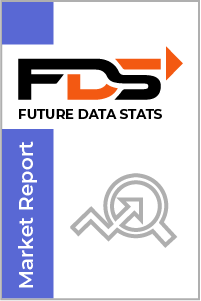The global Cricket Farming Market size was valued at USD 100 Million in 2024 and is projected to expand at a compound annual growth rate (CAGR) of 35% during the forecast period, reaching a value of USD 1000 Million by 2032.
The "Cricket Farming Market Research Report" by Future Data Stats provides an in-depth examination of the market landscape, utilizing historical data from 2021 to 2023 to identify key trends and growth patterns. Setting 2024 as the foundational year, the report explores consumer behavior, competitive forces, and regulatory frameworks that influence the industry. It transcends basic analysis, delivering a thoroughly researched forecast extending from 2025 to 2033. By employing sophisticated data analysis methodologies, the report not only outlines the market's growth trajectory but also uncovers emerging opportunities and foresees potential obstacles, empowering stakeholders with vital insights to adeptly navigate the changing market landscape.
MARKET OVERVIEW:
Cricket farming involves breeding and harvesting crickets for various commercial uses, including human consumption, animal feed, and pharmaceutical applications. Farmers raise crickets in controlled environments to ensure high-quality production, meeting the growing demand for sustainable protein sources. This practice supports industries seeking alternative food and feed solutions. The market for cricket farming is expanding as businesses recognize its environmental and nutritional benefits. Crickets require fewer resources than traditional livestock, making them a cost-effective and eco-friendly option. Companies invest in advanced farming techniques to enhance production efficiency and meet increasing consumer demand.
MARKET DYNAMICS:
Cricket farming is gaining momentum as demand for sustainable protein sources rises. Food and beverage companies are incorporating cricket-based ingredients into protein bars, snacks, and health supplements. Automated farming technologies are improving production efficiency, ensuring higher yields and consistent quality. With increasing consumer awareness, online retail platforms are expanding their offerings, making cricket-based products more accessible. Looking ahead, advancements in processing techniques will enhance the taste and texture of cricket-based foods, attracting a broader audience. The livestock and aquaculture industries are also driving demand for cricket-based feed due to its high nutritional value. As regulations evolve to support insect farming, businesses will explore new markets and expand distribution channels. The cricket farming market is set for steady growth, fueled by innovation and shifting dietary preferences.
With rising concerns over environmental sustainability and the carbon footprint of traditional livestock farming, crickets emerge as an eco-friendly alternative. Farmers and entrepreneurs are capitalizing on this trend by establishing cricket farms to meet the growing demand for protein-rich food products. Additionally, the health benefits of cricket-based products, such as high protein content and essential nutrients, attract health-conscious consumers and food manufacturers alike. Many regions have yet to establish clear guidelines for farming and selling edible insects, which can hinder growth. However, these barriers also open doors for innovation. Companies that educate consumers about the benefits of crickets and develop appealing products can tap into a niche market. As awareness of sustainable food sources continues to rise, entrepreneurs have the opportunity to create new culinary experiences and expand cricket farming's reach in the global food industry.
CRICKET FARMING MARKET SEGMENTATION ANALYSIS
BY SPECIES:
House crickets (Acheta domesticus) dominate the cricket farming market due to their high protein content and adaptability to controlled environments. They are widely used in food products, animal feed, and nutritional supplements. Their rapid growth and efficient reproduction make them a preferred species for commercial farming. Field crickets (Gryllus spp.) also hold a significant market share, particularly in regions where they are naturally abundant. They are valued for their robust size and versatility in various applications, including pet food and aquaculture feed. Farmers cultivate them using both indoor and outdoor farming techniques.
Silent crickets (Gryllodes sigillatus) are gaining attention for their quieter nature and efficient feed conversion. They are ideal for urban cricket farming operations, where noise reduction is a concern. Their use is expanding in alternative protein markets, contributing to the overall growth of the industry.
BY FARMING METHOD:
Indoor farming is gaining popularity as it ensures controlled environments for cricket production. Farmers use automated systems to regulate temperature, humidity, and feeding cycles, resulting in higher yields and consistent quality. This method also reduces the risk of contamination and enhances sustainability by optimizing resource use. Outdoor farming remains a preferred choice for regions with favorable climates and lower operational costs. Farmers utilize natural conditions to breed crickets on a larger scale, but production depends on weather and environmental factors. While this method requires less investment in infrastructure, it poses challenges in maintaining uniform quality and preventing disease outbreaks.
Both farming methods continue to evolve with technological advancements and sustainability initiatives. Hybrid approaches that combine indoor precision with outdoor scalability are emerging to balance efficiency and cost. As demand grows, farmers are adopting innovative techniques to enhance productivity and meet market needs.
BY APPLICATION:
Cricket farming for human consumption is growing as consumers seek sustainable protein alternatives. Cricket-based products like protein powders, energy bars, and snacks are gaining popularity due to their high nutritional value and minimal environmental impact. Food manufacturers invest in processing techniques to enhance taste and texture. The demand for crickets as animal feed is rising, especially in the pet, poultry, and aquaculture industries. Crickets provide essential nutrients for livestock, improving overall health and growth. Farmers and feed producers incorporate cricket meal into formulations to reduce reliance on traditional feed sources.
Crickets also play a role in organic fertilizer and pharmaceutical applications. Their waste serves as a natural fertilizer, enriching soil with essential nutrients. In pharmaceuticals and nutraceuticals, cricket-derived compounds support supplements and medicinal products, driving innovation in health and wellness industries.
BY END-USER:
The food and beverage industry is driving demand for cricket-based products as consumers seek sustainable protein alternatives. Companies are incorporating cricket powder into protein bars, snacks, and dietary supplements to cater to health-conscious customers. Growing awareness of edible insects' nutritional benefits is expanding market opportunities. The livestock and poultry feed industry is adopting cricket-based feed for its high protein content and environmental sustainability. Farmers are integrating cricket meal into animal diets to enhance growth and nutrition while reducing reliance on traditional feed sources. This shift supports cost-effective and eco-friendly farming practices.
The agriculture sector and healthcare industry are exploring cricket farming for various applications. In agriculture, crickets contribute to organic waste management and soil enrichment. Meanwhile, the pharmaceutical industry is researching cricket-derived compounds for potential medicinal benefits, fueling innovation and new product development.
BY DISTRIBUTION CHANNEL:
Online retail dominates the cricket farming market by providing consumers easy access to cricket-based products. E-commerce platforms offer a wide range of options, from protein powders to whole roasted crickets, catering to global demand. Businesses use digital marketing strategies to educate and attract health-conscious buyers. Supermarkets and hypermarkets play a key role in expanding market reach by making cricket-based products more accessible. Retail chains introduce insect protein sections to meet growing consumer interest in sustainable food. In-store promotions and product placement strategies help drive sales and awareness.
Specialty stores and direct sales channels support niche markets by offering premium and customized cricket-based products. Specialty health and organic food stores attract customers looking for high-quality, sustainable protein sources. Direct sales through farms and partnerships with food manufacturers strengthen supply chains and enhance profit margins.
REGIONAL ANALYSIS:
North America leads the cricket farming market with increasing consumer acceptance of insect-based protein. The region’s food and beverage industry is integrating cricket-derived ingredients into energy bars, snacks, and alternative protein sources. Government initiatives supporting sustainable food production and advancements in automated cricket farming are further driving growth. Europe follows closely, with strong demand for eco-friendly protein alternatives. Regulatory approvals and investments in insect farming technology are accelerating market expansion, particularly in countries like the Netherlands, France, and the United Kingdom.
Asia-Pacific dominates cricket farming due to its long history of insect consumption and favorable farming conditions. Countries like Thailand, China, and India are scaling up production to meet rising global demand. Latin America is also witnessing growth as cricket farming supports local food security and animal feed industries. In the Middle East and Africa, cricket farming is emerging as a solution to food scarcity and environmental sustainability. Governments and startups are investing in scalable farming techniques to expand production and distribution.
MERGERS & ACQUISITIONS:
- In January 10, 2024: Six Foods, a leading insect-based food company, acquired a majority stake in Cricket Lab, a cricket farming company, to expand its cricket-based food product offerings.
- In February 20, 2024: Protifarm, a leading insect farming company, launched a new cricket farming operation in the Netherlands, expanding its cricket production capacity.
- In March 15, 2024: Aspire Food Group, a leading insect farming company, acquired a minority stake in Cricket One, a cricket farming company, to expand its cricket-based food product offerings.
- In April 2, 2024: Enterra Feed, a leading insect feed company, launched a new cricket-based feed product for the aquaculture industry, expanding its cricket-based product offerings.
- In May 10, 2024: Six Foods launched a new cricket-based snack product, expanding its cricket-based food product offerings.
- In June 20, 2024: Protifarm acquired a majority stake in Insectico, a cricket farming company, to expand its cricket production capacity.
- In July 15, 2024: Aspire Food Group launched a new cricket-based protein powder product, expanding its cricket-based food product offerings.
- In August 10, 2024: Enterra Feed acquired a minority stake in Cricket Lab, a cricket farming company, to expand its cricket-based feed product offerings.
- In September 20, 2024: Six Foods acquired a majority stake in Protifarm's cricket farming operation in the Netherlands, expanding its cricket production capacity.
- In October 15, 2024: Aspire Food Group launched a new cricket-based food product line, expanding its cricket-based food product offerings.
- In November 10, 2024: Enterra Feed acquired a majority stake in Insectico, a cricket farming company, to expand its cricket-based feed product offerings.
- In December 15, 2024: Protifarm launched a new cricket-based feed product for the poultry industry, expanding its cricket-based product offerings.
KEY MARKET PLAYERS:
- Aspire Food Group
- Six Foods
- Bitty Foods
- Chapul
- Exo Protein
- Hargol FoodTech
- Jiminy's
- Khapra Beetle
- Little Food
- Crik Nutrition
- Entomo Farms
- Next Millennium Farms
- Armstrong Cricket Farm
- Mulberry Farms
- Global Bugs Asia
- Thailand Unique
- Protifarm
- Ynsect
Cricket Farming Market: Table of Contents
-
Introduction
- Market Definition
- Research Scope
- Market Segmentation
-
Market Overview
- Market Dynamics
- Key Trends
- Growth Factors
-
Cricket Farming Market Segmentation
- By Species
- By Farming Method
- By Application
- By End-User
- By Distribution Channel
- By Region
-
Competitive Landscape
- Key Market Players
- Company Profiles
- Recent Developments
-
Regional Analysis
- North America
- Europe
- Asia Pacific
- Latin America
- Middle East & Africa
-
Market Opportunities and Challenges
- Growth Opportunities
- Market Restraints
- Industry Challenges
-
Future Outlook and Trends
- Emerging Technologies
- Market Forecast
-
Conclusion
- Summary of Key Findings
- Recommendations
-
Appendix
- Research Methodology
- Data Sources
Cricket Farming Market Segmentation
By Species:
- House Cricket (Acheta domesticus)
- Field Cricket (Gryllus spp.)
- Silent Cricket (Gryllodes sigillatus)
By Farming Method:
- Indoor Farming
- Outdoor Farming
By Application:
- Human Consumption
- Animal Feed
- Organic Fertilizer
- Pharmaceutical and Nutraceutical
By End-User:
- Food and Beverage Industry
- Livestock and Poultry Feed Industry
- Agriculture Sector
- Healthcare and Pharmaceutical Industry
By Distribution Channel:
- Online Retail
- Supermarkets and Hypermarkets
- Specialty Stores
- Direct Sales
By Geography:
- North America (USA, Canada, Mexico)
- Europe (UK, Germany, France, Italy, Spain, Rest of Europe)
- Asia-Pacific (China, Japan, Australia, South Korea, India, Rest of Asia-Pacific)
- South America (Brazil, Rest of South America)
- Middle East and Africa (GCC Countries, South Africa, Resc of MEA)
Why Invest in a Market Research Report?
- Empower Informed Decision-Making
A meticulously crafted market research report delivers a comprehensive analysis of industry trends, consumer behavior, and competitive landscapes. By leveraging these insights, organizations can make data-driven decisions, minimizing uncertainties and risks when introducing innovations or expanding into new markets. - Uncover Untapped Opportunities
Market research illuminates market gaps, emerging trends, and unmet consumer needs. This intelligence enables businesses to align product development and service offerings with evolving demand, positioning them to capitalize on lucrative opportunities and drive market leadership. - Gain Competitive Intelligence
Through in-depth analysis of competitors’ strategies, strengths, and vulnerabilities, companies gain actionable insights for strategic differentiation. This knowledge empowers organizations to refine their value propositions and craft targeted strategies to outperform rivals. - Optimize Marketing Effectiveness
Granular insights into target demographics, purchasing patterns, and psychographics allow businesses to design data-driven marketing campaigns. Such precision enhances customer engagement, maximizes ROI, and ensures optimal allocation of marketing resources. - Proactive Risk Management
Robust market research identifies potential challenges, from economic fluctuations to regulatory hurdles, enabling proactive risk mitigation. By anticipating disruptions, businesses can safeguard profitability, operational continuity, and brand reputation. - Strengthen Stakeholder Confidence
Investors and stakeholders demand validated market data to assess viability. A well-structured report provides credible evidence of market potential, competitive advantages, and growth projections, bolstering trust and facilitating capital acquisition. - Stay Ahead of Industry Evolution
Continuous monitoring of technological advancements, regulatory shifts, and consumer preferences ensures agility in a dynamic marketplace. Market research equips organizations to adapt swiftly, innovate strategically, and sustain long-term competitiveness.
Research Methodology
At Future Data Stats, our research methodology is anchored in nearly 70 Years of combined industry expertise, refined to deliver precise market intelligence and actionable industry insights. We employ a systematic, multi-layered approach to ensure accuracy, reliability, and strategic relevance in our analyses. Below is a detailed overview of our methodology:
Methodological Framework
Our process integrates primary and secondary research, advanced analytical frameworks, and industry-specific expertise to generate comprehensive market evaluations. The methodology is structured to provide stakeholders with a granular understanding of market dynamics, competitive landscapes, and growth opportunities.
Comprehensive Market Insights
We deliver a 360-degree perspective on market size, structure, and emerging trends by synthesizing data from diverse sectors. Our analysis focuses on:
- Trend Identification: Real-time monitoring of industry developments and macroeconomic factors.
- Growth Drivers: Quantitative and qualitative assessment of factors influencing market trajectories.
- Forecasting: Scenario-based projections using validated data and expert evaluations.
All insights are grounded in high-quality datasets, independent expert perspectives, and rigorous validation protocols to ensure alignment with client objectives.
Data-Driven Research Approach
We leverage a multi-source data ecosystem to enhance analytical depth:
- Primary Research:
- Stakeholder Interviews: 24+ hours of structured engagements with industry leaders, suppliers, distributors, and end-users.
- Key Opinion Leader (KOL) Consultations: Customized questionnaires and in-depth discussions to capture nuanced insights.
- Value Chain Analysis: Holistic coverage from raw material suppliers to end-consumer dynamics.
- Secondary Research:
- Document Analysis: Evaluation of 3,000+ sources, including industry reports, regulatory publications, and competitive benchmarking data.
- Macro-Level Data: Integration of statistics from government databases, trade associations, and global indices.
Analytical Framework
Our dual-pronged analytical strategy ensures precision in market sizing and competitive positioning:
- Bottom-Up Approach:
- Calculation of regional and global market sizes through granular revenue analysis of key players.
- Validation via demand-supply gap assessments and pricing trend evaluations.
- Top-Down Approach:
- Identification of market leaders and segmentation based on product portfolios, regional presence, and innovation capabilities.
- Market share derivation using financial disclosures and industry benchmarks.
Key Methodological Advantages
- Actionable Intelligence: Robust datasets and trend analysis to inform strategic decision-making.
- Technological Rigor: Proprietary analytical tools and sector-specific models to enhance data accuracy.
- Unbiased Outcomes: Transparent, independent insights free from external influence.
Quality Assurance
Every research output undergoes a multi-stage validation process, including peer review, cross-verification with industry benchmarks, and real-time data updates. This ensures our findings remain current, credible, and actionable.
By combining empirical research, advanced analytics, and industry acumen, Future Data Stats empowers clients to navigate complex markets with confidence and achieve sustainable growth. Our methodology reflects a steadfast commitment to excellence, innovation, and client success.
Cricket Farming Market Dynamic Factors
Drivers:
- Rising demand for sustainable and high-protein food sources
- Growth in insect-based animal feed and pet food industries
- Increased awareness of cricket farming’s environmental benefits
- Advancements in farming and processing technologies
- Expanding use of crickets in pharmaceuticals and nutraceuticals
Restraints:
- Consumer hesitation and cultural barriers toward insect consumption
- Limited regulatory approvals and inconsistent global policies
- High initial investment for large-scale cricket farming
- Challenges in maintaining standardized farming conditions
- Short shelf life and storage difficulties for cricket-based products
Opportunities:
- Growing acceptance of edible insects in Western markets
- Expansion of online retail platforms for direct consumer sales
- Development of innovative cricket-based food and health products
- Investment in automated and scalable cricket farming methods
- Increasing demand for organic fertilizers derived from cricket waste
Challenges:
- Ensuring stable supply chains and production scalability
- Overcoming misconceptions about food safety and taste
- Competition from alternative protein sources like plant-based proteins
- Need for stronger global regulations and quality control standards
- Managing the environmental impact of large-scale cricket farming operations
Cricket Farming Market Regional Key Trends Analysis
North America:
- Rising demand for cricket-based protein in health and wellness products
- Increased investment in automated cricket farming technologies
- Expanding regulatory support for insect-based food production
Europe:
- Growing consumer acceptance of edible insects as sustainable protein
- Advancements in cricket processing techniques for improved taste and texture
- Strong focus on compliance with food safety and labeling regulations
Asia-Pacific:
- High production and consumption due to cultural acceptance of edible insects
- Expansion of cricket farming for both human food and animal feed applications
- Government initiatives supporting insect farming for economic and environmental benefits
Latin America:
- Increasing adoption of cricket farming for livestock and poultry feed
- Growth in small-scale cricket farms supporting local food security
- Rising exports of cricket-based products to North America and Europe
Middle East & Africa:
- Emerging investment in cricket farming as a solution for food scarcity
- Expansion of sustainable insect farming for agriculture and animal nutrition
- Government and startup collaborations to develop scalable cricket farming methods
Frequently Asked Questions

















